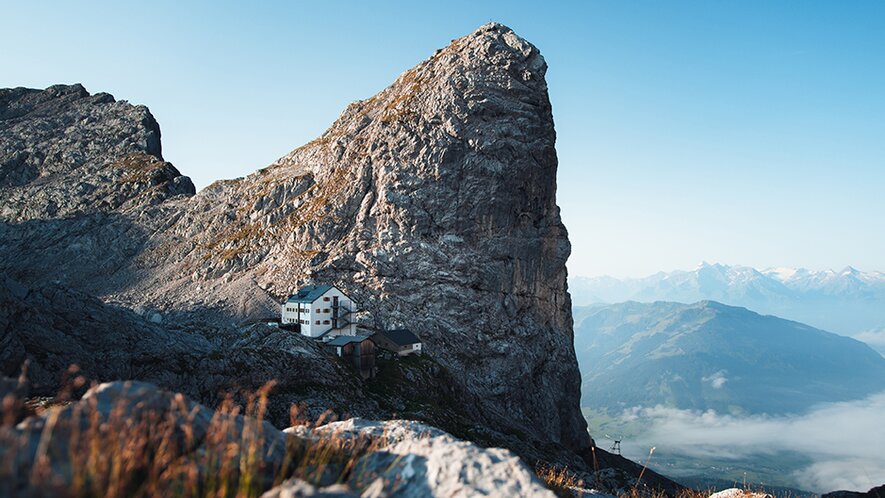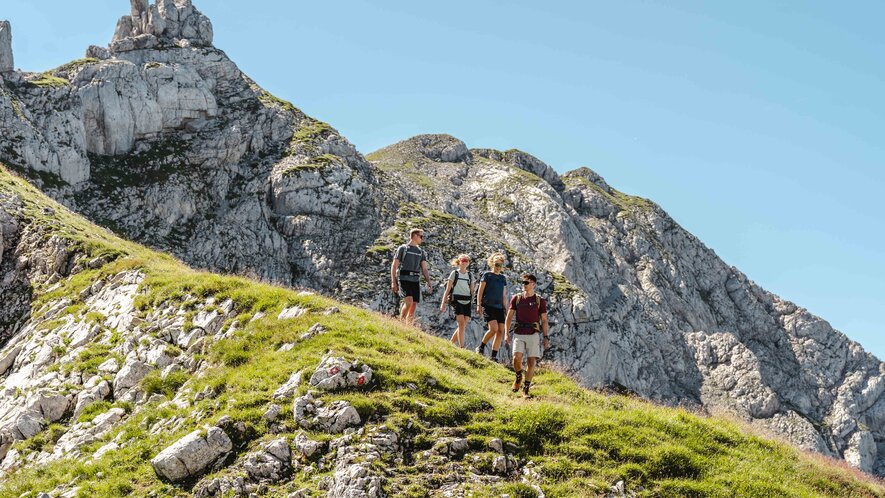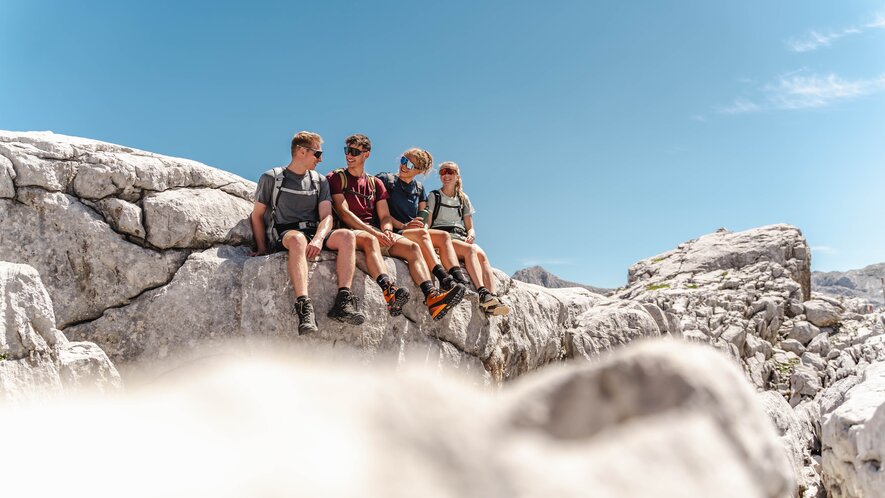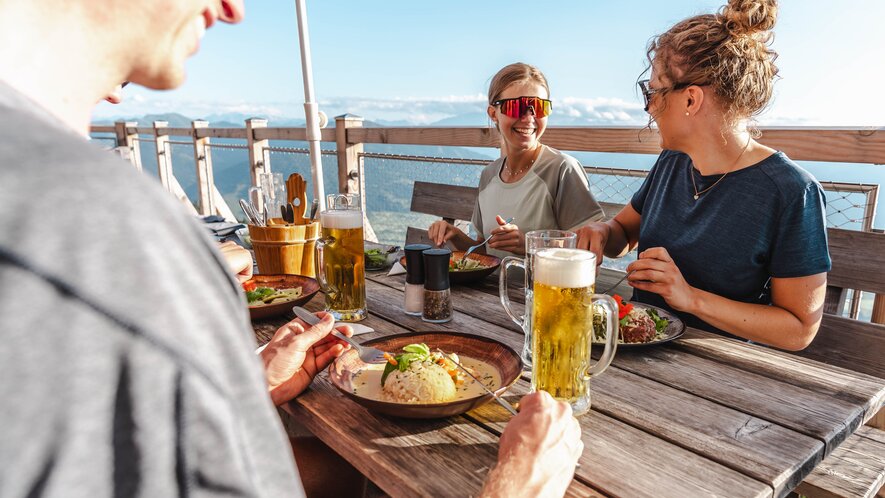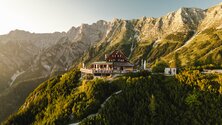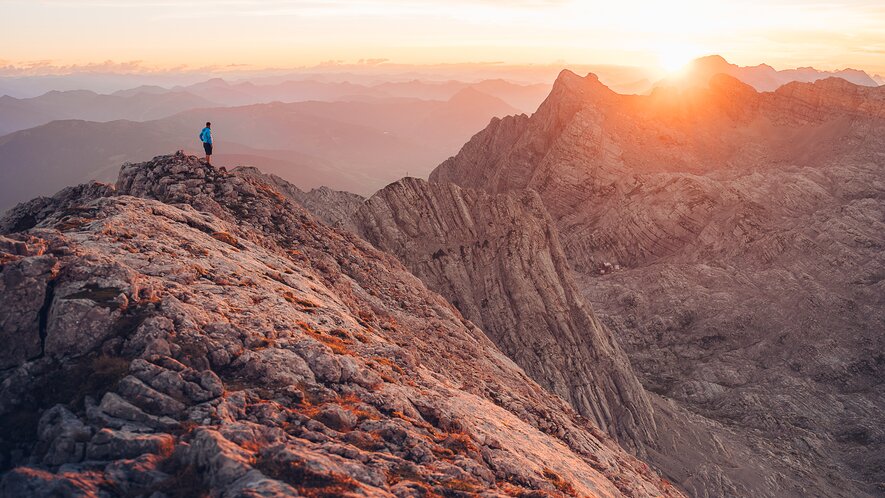The Steinernes Meer – Where Stories Are Carved in Stone
A sea of stone rolling toward the horizon. Waves of grey limestone - rugged, raw, and majestic. Standing at the base of the Steinernes Meer, it's easy to understand how this mountain massif got its name. Its highest summits reach up to 2,655 metres – a spectacular karst plateau shaped by nature over thousands of years. Since 1930, Saalfelden has proudly carried the title "am Steinernen Meer". But the bond between people and this extraordinary place goes back much further.
From Hunters and Smugglers to Visionaries
In earlier times, the Steinernes Meer was mainly the territory of local hunters, smugglers, and a few daring adventurers. It wasn’t until the mid-19th century that mountaineers began to explore the area - and with them came the rise of alpine tourism and a growing fascination with the mountains. The Austrian Alpine Club (ÖAV) was founded in 1862, marking the beginning of a new era: opening up the Alps to a wider public. Saalfelden was part of this movement, with new trails, huts, and bold ideas taking shape. One such visionary was Michael Holzner - known locally as the "Iron Michl". A glazier from Saalfelden, he tirelessly campaigned for the construction of the Ramseidersteig trail, which opened in 1878. In 1885, the Riemannhaus followed - still an essential base for hikers and mountaineers today.
From Summer Retreat to Winter Sports
By the early 20th century, Saalfelden had become a popular summer destination - even earning praise in "Dillinger’s Travel Newspaper". And since skiing was possible high up in the Steinernes Meer even during summer, local pioneers soon dreamed of a bold new project: a cable car leading up to the Riemannhaus. The base station was to be built in Ramseiden. Estimated construction costs stood at two million Austrian schillings. But economic difficulties and political opposition stalled the plan - as did another ambitious project: a scenic mountain road, designed in 1939 by Franz Wallack (famous for the Großglockner High Alpine Road). That plan, too, was cut short by the outbreak of World War II.
Skiing, Ice Stock Sports, and Alpine Air
Despite setbacks, alpine sports gained a strong foothold in the Steinernes Meer. In 1909, the first ski descent took place, followed by the first high-altitude ski course in 1929. Even ice stock sports were already popular - with a tournament at the Riemannhaus held as early as 1906, and later complemented by cross-country races and club events. And today? The Steinernes Meer continues to attract hikers, ski tourers, and mountaineers. Around 20 peaks can be reached via marked trails. Whether you're planning a day hike or a multi-day hut-to-hut adventure, the area's alpine huts - Riemannhaus, Ingolstädter Haus, Peter-Wiechenthaler Hütte, and Kärlingerhaus - make it easy to experience the mountains up close.
Timeless Beauty – Then and Now
The Steinernes Meer is more than just a mountain range. It's a natural wonder, a place filled with stories and emotion. Anyone who ventures into this landscape will feel it - the wild freedom, the pioneering spirit, and the peace of the high mountains. Then as now - the Steinernes Meer remains at the heart of the Saalfelden Leogang region.
Images: Michael Geißler, Julian Gruber



